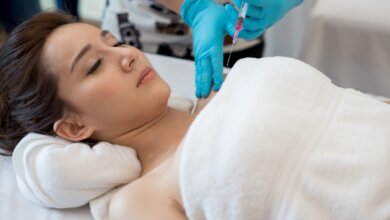What Is a Radial Head Replacement? A Guide for Patients.

If you’ve been told you need a radial head replacement, it’s natural to feel uncertain or even overwhelmed. Medical jargon can be confusing, especially when it’s about a part of your body you’ve never thought much about before. This guide is here to help you understand what radial head replacement involves, why it might be necessary, and what you can expect from the procedure and recovery.
Understanding the Radial Head
Your elbow is a complex hinge joint made up of three bones: the humerus (upper arm bone), the ulna, and the radius (the two bones in your forearm). The radial head is the top part of the radius where it connects with the elbow. It plays a key role in both bending the elbow and allowing the forearm to rotate, the motion you use when turning a doorknob or rotating your palm up and down.
When Is a Radial Head Replacement Needed?
In many cases, injuries to the radial head, such as fractures, can be treated with immobilization, physical therapy, or minor surgery. However, some fractures are too severe, especially if the bone is shattered into multiple pieces or doesn’t align properly. In these situations, trying to reconstruct or fix the radial head may not be possible or effective. That’s where a radial head replacement comes in.
This procedure is most commonly recommended for:
- Complex fractures of the radial head that can’t be repaired
- Fractures combined with ligament injuries
- Chronic instability or pain in the elbow following trauma
- Failed previous surgeries on the radial head
What Happens During the Procedure?
Radial head replacement is a type of orthopedic surgery performed under anesthesia. The surgeon makes a small incision around the elbow to access the damaged bone. The broken pieces of the radial head are removed, and a prosthetic, typically made of metal, is inserted in their place. This artificial radial head is designed to replicate the natural shape and function of the original bone, allowing for smoother movement and better stability.
The entire procedure usually takes about one to two hours, though this can vary depending on the complexity of the injury and whether additional repairs are needed.
Recovery: What to Expect
Recovery from a radial head replacement doesn’t happen overnight. Initially, your elbow will be placed in a splint or brace to keep it stable. Pain and swelling are common, but these are typically managed with medication and rest.
Physical therapy is a crucial part of the healing process. Your therapist will guide you through gentle range-of-motion exercises early on, progressing to strengthening movements as your elbow heals. Most patients begin to regain functional movement within a few weeks, but full recovery can take several months.
It’s important to follow your surgeon’s and therapist’s instructions closely during this time. Overdoing it too soon can cause complications, but staying too inactive may lead to stiffness and reduced mobility.
Will My Elbow Feel Normal Again?
Many patients are able to return to their daily activities, including work and light recreational sports, after a successful radial head replacement. While your elbow might not feel exactly like it did before the injury, most people notice a significant reduction in pain and improvement in function.
That said, results can vary depending on the severity of the original injury, your overall health, and how diligently you follow your rehabilitation plan.
What Position is the Patient in for Radial Head Replacement Surgery?
For radial head replacement surgery, the patient is typically positioned supine with the arm placed on an arm board or hand table. This allows optimal access to the lateral elbow. Sometimes, a lateral decubitus or beach chair position is used depending on surgeon preference and the surgical approach required.
Proper positioning is crucial for optimal visualization and access to the radial head. The arm is usually prepped and draped free to allow full range of motion during the procedure. Care is taken to pad pressure points and ensure patient comfort throughout the surgery.
Final Thoughts
A radial head replacement can sound intimidating, but for many people, it’s a path to regaining use of the arm and reducing long-term discomfort. If you’re facing this surgery, know that you’re not alone, and that with a skilled medical team and a bit of patience, there’s a very good chance you’ll get back to doing the things you love.
Always talk to your orthopedic surgeon to understand your specific case, ask questions, and make informed decisions about your treatment.
Looking for ISO and CE-certified orthopedic implants, including radial head prosthesis? Siora Surgicals Pvt. Ltd. could be your stop. With over 3 decades of experience in the industry, the company supplies its orthopedic products to clients in over 50 countries. Siora is also looking to establish itself as a trusted ortho implants company in Lebanon by finding distribution partners in the country.




